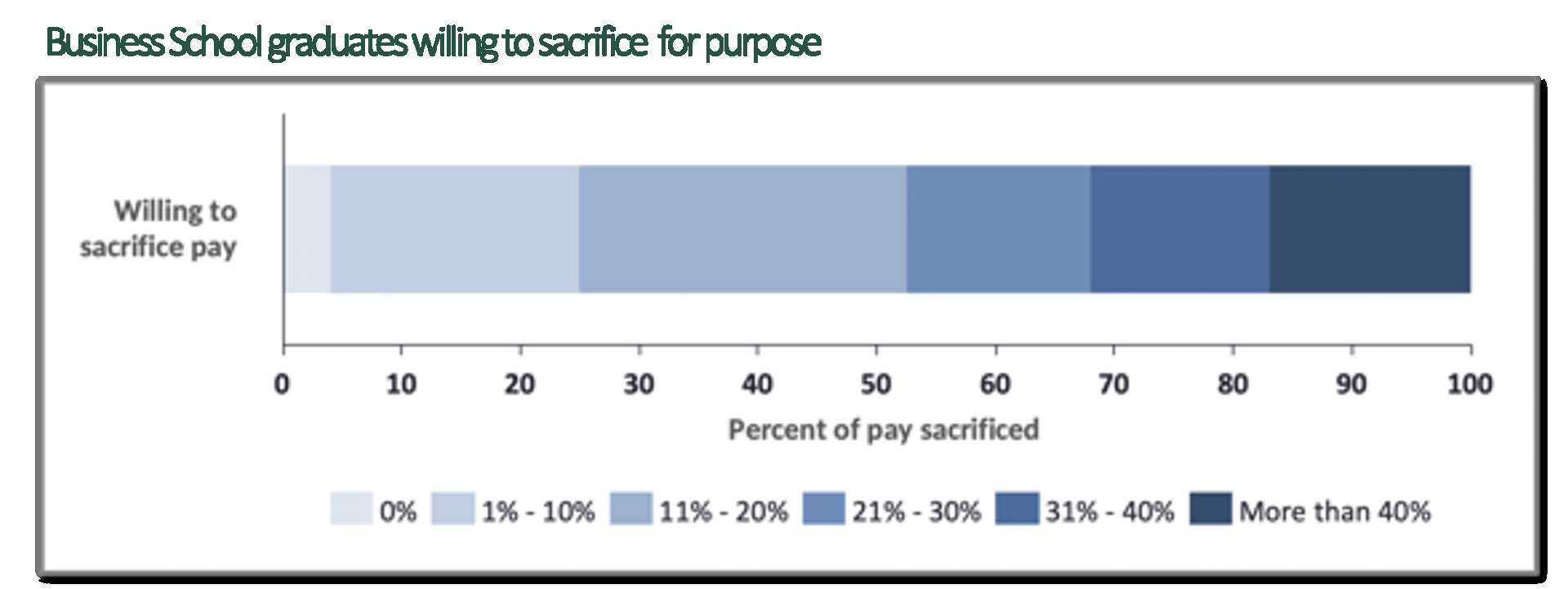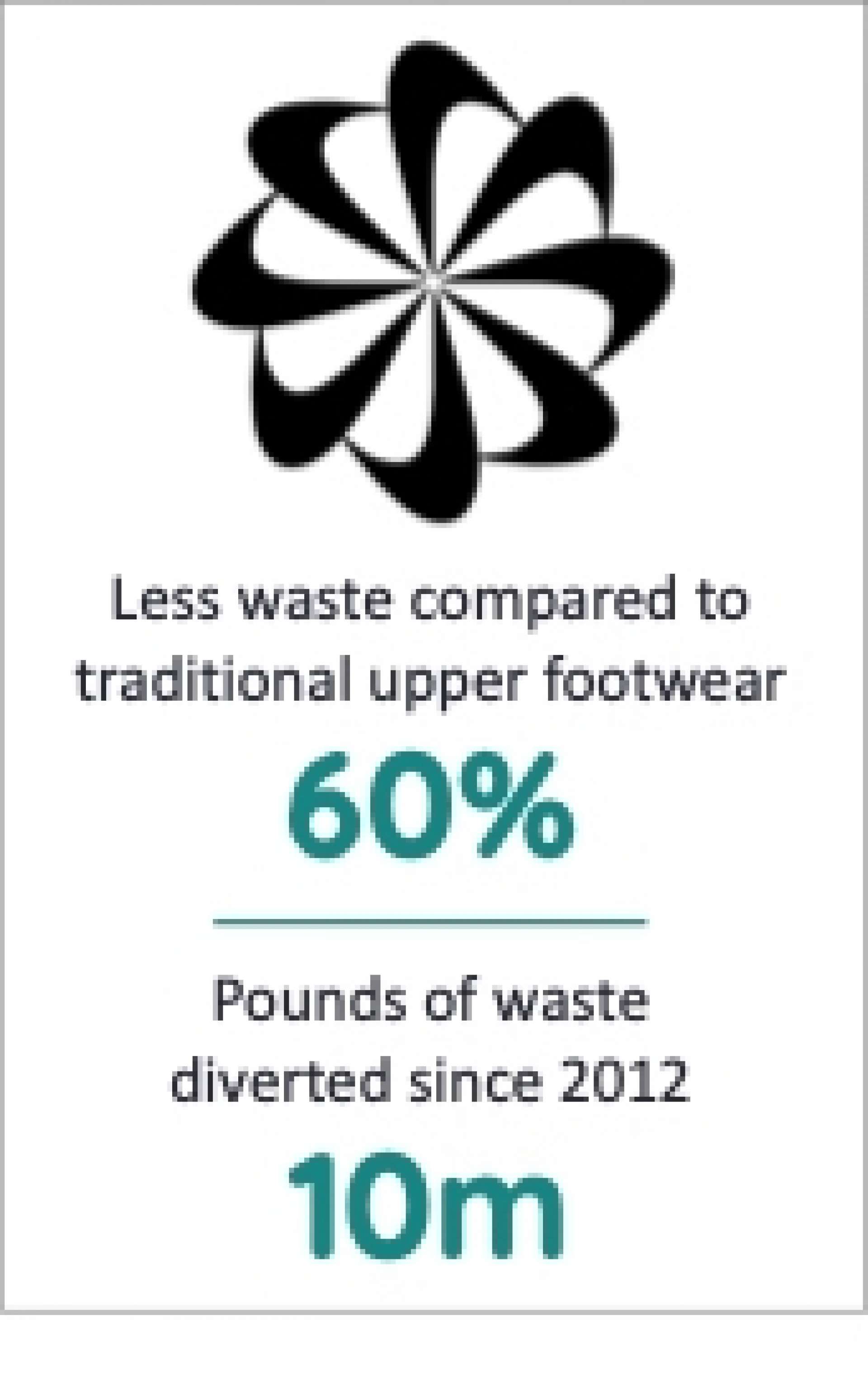Managing with purpose can reduce expenses
Compensation Expenses
Depending on the company, employees are often one of the largest (if not the largest) line-item expense. These expenses can be controlled by improving productivity, increasing employee engagement, and reducing employee turnover.
Having a clear focus on social and environmental sustainability that is well understood by prospective employees can have a direct impact on compensation expense. According to a 2018 study by PRME (Principles for Responsible Management Education, a UN support initiative) and Macquarie University Graduate School of Management, suggests that employees are willing to sacrifice pay to work for companies that care about all stakeholders, the environment, workers, and ethics. In fact, just over 27 percent (the largest cohort) of students surveyed indicated they would give up 11 to 20 percent of their pay. Nearly 17 percent were willing to work for lower pay exceeding 40 percent – a staggeringly large number. Imagine a highly skilled, highly motivated workforce who are willing to work for less pay, which would reduce compensation expenses by 20 to 30 percent.

Productivity
Employee engagement is a key factor in organizational productivity. It is common sense that more-engaged employees will have higher output than those who are disengaged. A company’s focus on sustainability has an impact on engagement, with 88 percent of millennials indicating their jobs are more satisfying when they have opportunities to positively impact social and environmental issues.
Disengaged employees silently increase expenses through lost productivity. A March 2019 Forbes article cites a survey that indicates only 21 percent of American employees are highly engaged. That disengagement can be translated into financial impacts: “disengaged employees have 37% higher absenteeism, 18% lower productivity and 15% lower profitability. When that translates into dollars, you're looking at the cost of 34% of a disengaged employee's annual salary, or $34,000 for every $10,000 they make.” To make that more tangible, a company with a $100 million payroll will lose $34 million in lost productivity every year – not a small problem.
Juxtapose the positive impacts of engaged employees with the negative impacts of disengaged employees. Project ROI suggests that a strong emphasis on sustainability can reduce turnover by 25-50 percent. With the high costs of sourcing talented employees, training them, and the loss of institutional knowledge, a significant reduction in turnover can have a correspondingly significant financial impact. And increasing employee engagement by 7.5 percent can lead to productivity increases of 13 percent.
Operational Expenses
There are many ways to reduce operating expenses. Simply looking at processes, removing waste, increasing productivity, or enabling technology can drive expense reduction. Becoming a B Corp or Benefit Corporation isn’t necessary to achieve those goals.
However, the benefit of the B Corp model and using the B Impact Assessment – in general managing with purpose – is that it provides a different lens for thinking about operations. Rather than looking just at basic processes, it creates a focus on aspects that a company may not consider otherwise.
Levi Strauss is not a B Corp. However, they have taken a purpose-driven approach to their business and this approach aligns with the B Corp model and the underlying values.
Levi’s uses a “profit-through-purpose” approach to their business and this led them to conduct a lifecycle analysis of their jeans, with the analysis focusing on water use. The initial intent was to understand overall water use and the associated environmental impact. Through the analysis, they gained an understanding of how much water is used in each step of their process, from growing the cotton, to making their jeans, and consumer water use through the end-of-life of a pair of jeans.

As a result of this lifecycle analysis, Levi’s began investigating, and continues to pursue, how they can change their processes to reduce their own water consumption. They have seen a corresponding improvement in profitability and are widely recognized within the garment industry as a leader in sustainable practices.
There are other material benefits associated with managing with purpose. A 2018 Gallup poll demonstrates that increased employee engagement, which Certified B Corporations consistently experience, leads to changes in business operations that all lead to expense reduction:
- Reduced absenteeism – 41%
- Lower turnover – 24%
- Decreased safety incidents – 70%
- Reduced inventory loss – 28%
- Fewer quality defects – 40%
Nike provides a final example of how applying a sustainable lens to manufacturing can reduce expense. In 2012, Nike started producing a line of shoes that used what they refer to as “flyknit” technology. This produced a lighter shoe, but more importantly, significantly reduced the amount of material used in manufacturing the shoe.

According to their website, flyknit reduces waste by 60 percent compared to their traditional methods for making the upper part of the shoe. While they had some upfront investment to scale this process, a 60 percent reduction in material should yield long-term benefits and expense reductions. And they get to be recognized as being stewards of the environment by reducing waste that might otherwise end up in a landfill.
Like Levi’s, Nike is not a B Corp. Yet they do provide a view into how the B Corp mindset, principles, and requirements benefit those companies that adhere to them. The B Impact Assessment provides a clear focus on environmental impacts, and achieving the desired impacts and gaining points in this area requires that companies understand their footprints. Additional points are gained by reducing waste, increasing recycling, and otherwise diverting waste from landfills. Companies that are serious about the assessment and the certification look at manufacturing processes differently, creating opportunities to reduce expenses that may have been overlooked without the added level of accountability that the certification provides.
The certification itself will not reduce expenses. Companies still need to make the effort and constantly evaluate their practices. In other words, certification is not a silver bullet. But it does provide a direction and supports a culture that increases a company’s ability to achieve their targets.
Read More
The 1980s Called and They Want Their Business Case Back: Why we're rejecting the "business case" for sustainability
They say a rising tide raises all boats. But there isn’t any raising to be done when the tide no longer comes into the bay – all boats remain stranded. We are often asked about the business case for sustainability. For y
Protect Your Community or Organization with a Climate Action Plan
Introduction Our changing climate impacts every aspect of our lives—our economy, our communities, and the environment—in ways both visible and unseen. While scientists and environmental organizations have long recognized
Witnessing the world of sustainable business firsthand
As a young student with a passion for climate justice and sustainability, it always felt like a contradiction to pursue a degree in business. From what I had witnessed, businesses didn’t necessarily operate ethically. Mu
Interning with Purpose: My Journey with Measure Meant
From January to May 2024, I had the distinct pleasure of working with Measure Meant as an Operations Intern. As a graduating senior at Gonzaga University, I had not planned on pursuing another internship in my final seme




